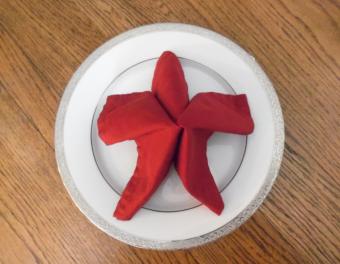
If you love making gifts using origami, Japanese puzzle box instructions can help you create the ultimate interactive structure. These boxes have an important place in Japanese culture and are featured in traditional folk tales.
Legend of the Puzzle Box
A puzzle box plays a very important role in one Japanese legend, called Urashima Taro. In this story, a fisherman saved a turtle and was rewarded for this deed with a special invitation from the Mistress of the Sea. He joined her in her magical palace, but after three days, he began to miss his home. Upon his departure, the Mistress of the Sea gave him a Japanese puzzle box, called the "Tametebako," and instructed him never to open it. When the fisherman returned home, he realized that 300 years had passed. Everyone he knew and loved was gone. In despair, he opened the box, and a puff of smoke came out. He was instantly transformed into an old man, and he realized that the Mistress of the Sea had captured his youth inside the box.
Puzzle Boxes Today
The instructions for creating the Tametebako were lost for hundreds of years, but origami experts were able to recreate the box based on illustrations in a manuscript from 1743. These boxes are made using modular origami, and they are relatively simple to create.
Today, small gifts or money are sometimes hidden inside a Tametobako and presented to friends and family. These boxes are especially popular with children, since the ingenious box is a little gift in itself. When the box is opened, it comes apart, providing hours of entertainment.
Modular Origami: Japanese Puzzle Box Instructions
As a form of modular origami, the puzzle box is constructed of several smaller units. In order to make a Tometobako, you'll need to create nine pinwheel folds. Since these pinwheel folds require you to make cuts, purists may not consider these shapes origami in the very strictest sense of the word. However, each unit is quite easy to make, and together, they make a truly impressive structure.
Things You'll Need
- Nine sheets of origami paper
- Scissors
- Folding surface
What to Do
- Fold a single sheet of square origami paper into three equal sections, carefully creasing the folds to mark them. Turn the paper, and repeat this process to create nine squares. Your paper will look similar to a tic-tac-toe board.
- Use the scissors to cut crossing diagonal lines in the center square of the paper. Fold in one corner of the paper so it lines up with the outside of the center square, creating a diagonal fold. Crease the fold, and unfold it. Repeat this step with each of the four corners.
- Now bring each outer edge in to create a pinwheel. The paper has been folded to naturally take on this shape. Overlap each side, and then tuck the last one in.
- Fold down the flaps you created when you cut the center square in step two. Tuck two of these flaps into the corresponding pockets, leaving two flaps sticking out. This will produce one side of your puzzle box.
- Repeat steps one through four to create nine pinwheels.
- Now it's time to connect the modules. You'll use the remaining two triangular cut flaps to attach your modules together. Begin with one pinwheel, and tuck one of the triangles into the pocket of another pinwheel, creating two faces of the cube. Continue tucking the flaps until you've completed the entire puzzle box.
- To open the box, simply pull one of the pinwheels off of the cube. The box will spring apart, creating a puzzle for the recipient.
Origami Box Variations
Although this traditional Tametobako is fairly simple, origami boxes can be extremely complex. For more information on the many origami box variations, check out the following:
- Folded Paper Box Patterns
- How to Make a Paper Box
- Origami Box Instructions
- Origami Box Patterns
If you'd like to learn how to create modular origami, Japanese puzzle box instructions can help. Once you learn how to create the pinwheel folds, this project is quite simple. Pretty soon, you'll be giving puzzle boxes to all your friends.







